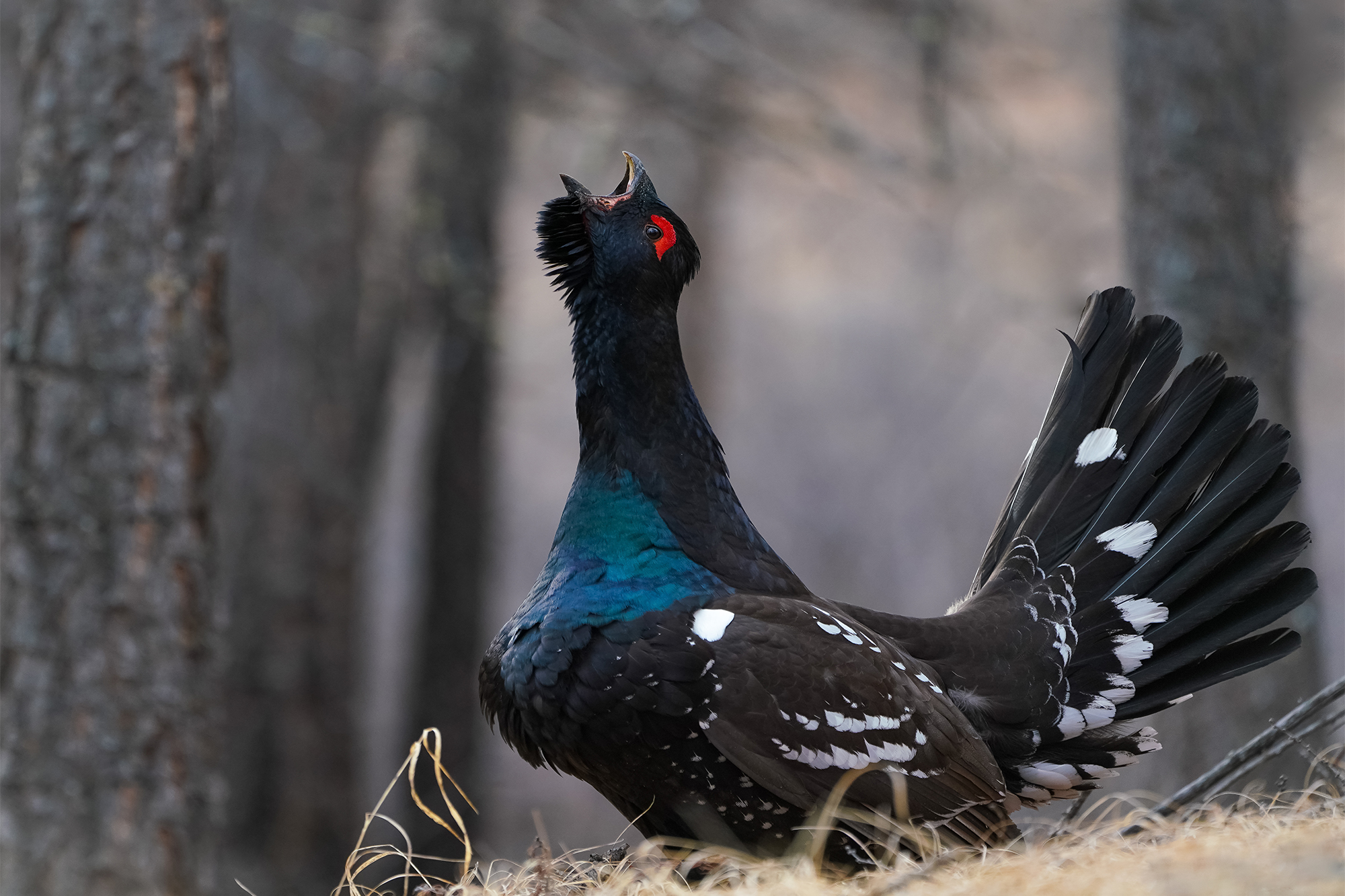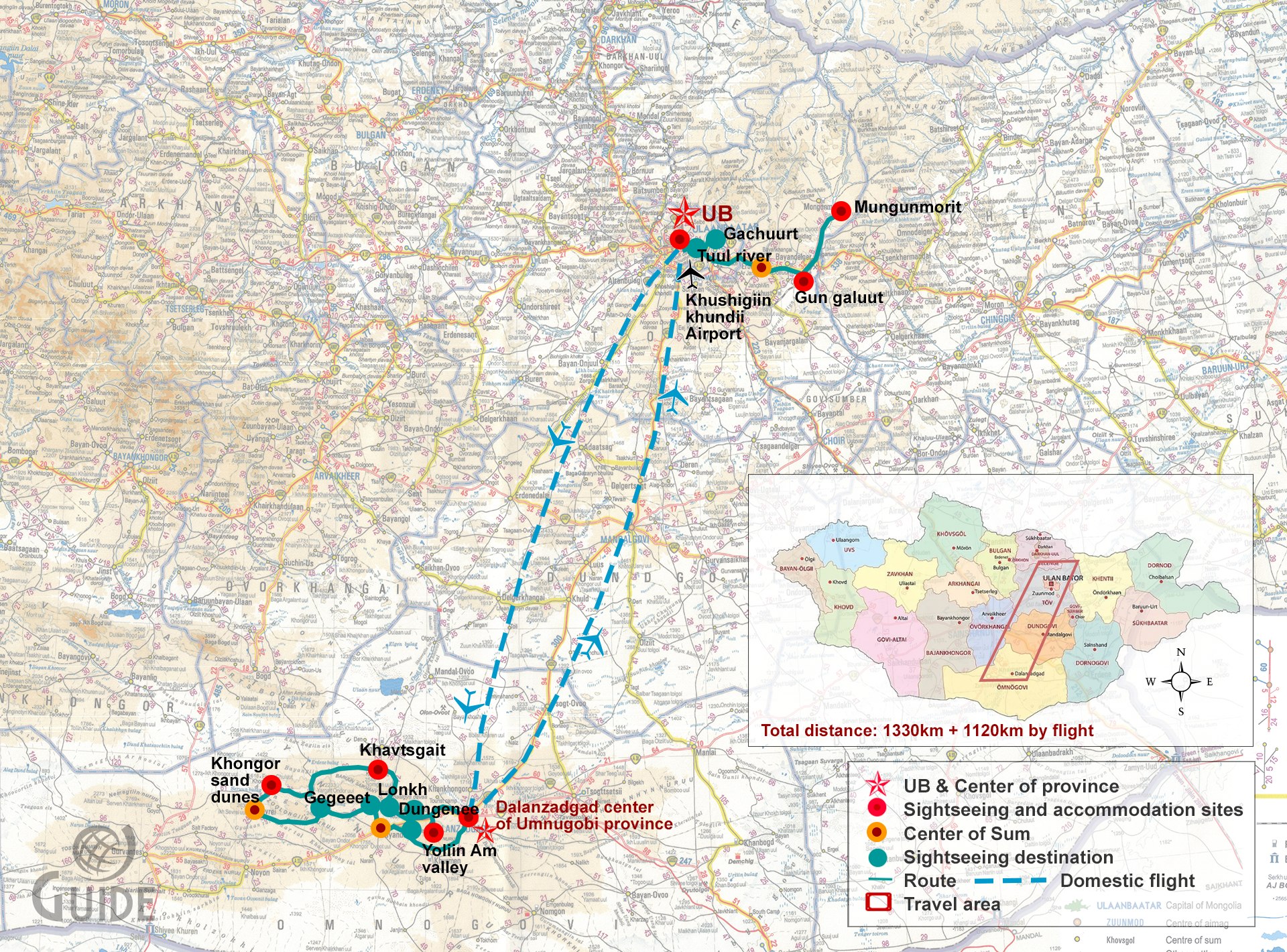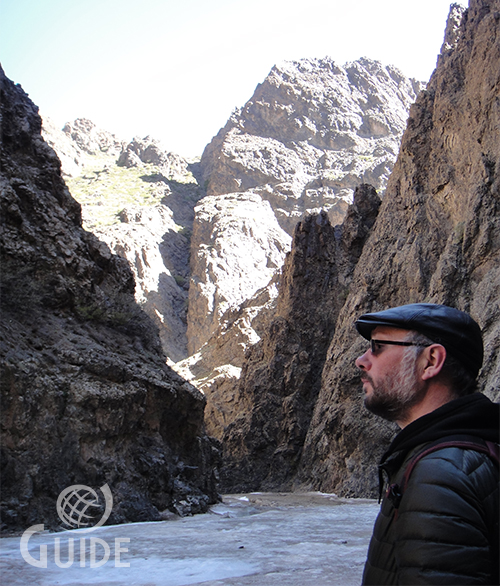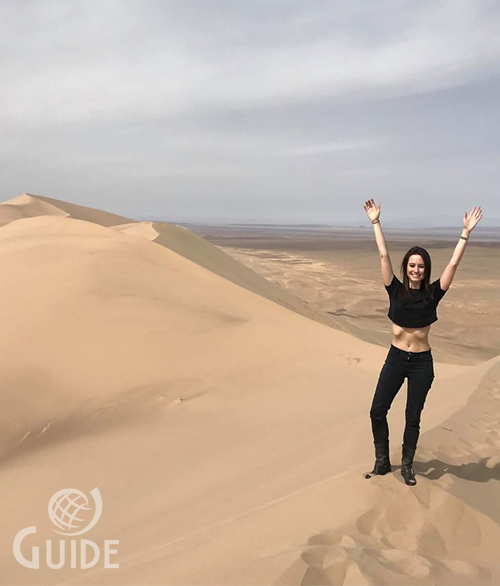Itinerary
DAY 1: Chinggis Khaan Airport - UB (60 km)
You will be welcomed to Mongolia and upon your arrival at Chinggis Khaan Airport, our friendly team meet you at the airport and transfer you to a hotel nearby (30km). If you come by morning flight, in the remainder of the day, you will be offered to take an short observation tour around the city.
Meal: Dinner
Accommodation: Hotel
DAY 2: Umnugovi – 100 km
We leave the hotel early morning and depart by domestic flight to Dalanzadgad, the provincial capital of Umnugovi (South Gobi) province. The flight takes 1.5 hours. We will observe in the habitat around the city and take lunch there. Then we will drive to the Yoliin am (Bearded vulture valley). This is a rocky mountain gorge named after the Bearded vulture bird and located in west 50km from Dalanzadgad. The gorge is about 2800 meters above sea level and has an area of 64 square kilometers. It stretches 8km from the southwest to the northeast and small stream runs through its rock walls corridor. In winter, it is covered with ice, and the thickness of the ice reaches more than one meter. Small birds visit and often gather in this small river and the bushes along its banks. We will stay and rest at the nearby tourist camp and take dinner.
Meal: Breakfast, Lunch, Dinner
Accommodation: Tourist camp
DAY 3: Dungenee gorge – Lonkh (150 km)
Early morning, we will drive to Dungenee and Lonkh to see the Altai Snowcock in one of the many passes of Gobi Gurvan Saikhan mountains. The Gobi Gurvan Saikhan mountain (Gobi Three beauty mountain) is the series of mountain ridges extending 180 km to the west from Dalanzadgad. The highest is the Zuunsaikhan mountain with a height of 2846 meters above sea level. Dungenee Gorge is located 10 km from the Yoliin am (Bearded vulture valley) and is the largest valley of Zuunsaikhan Mountain. It has similar nature to the Yoliin am by its rocky walls and mountain small streams. Peregrine falcons, hawks, golden eagles, and crested ospreys often build their nests there. Mongolian sakura blossoms in spring by the end of April. The region has the animals listed in the Mongolian Red Book (Endangered species book), such as Argali Wild sheep, Asiatec Ibex, Snow leopard, Black-tailed Gazelle, Marbled Polecat, Beech Marten, Eurasian Lynx, Pallas’ Cat, Wild cat, Thick-tailed Pygmy Jerboa, Five-toed Pygmy Jerboa, Red-cheeked Ground Squirrel, Mongolian GazelleIt should be noted that in order to see the Altai Snowcock, you have to walk a considerable distance to the highlands of the mountain. In the afternoon, we will descend and lodge overnight in a nearby herder family.
Meal: Breakfast, Lunch, Dinner
Accommodation: Herder family
DAY 4: Khavtsgait – Khongor Sand dunes (200 km)
In the morning we head to Khongor Sand dunes passing through Khavtsgait mountain. Small birds show up to drink in the streams of Khavsgait. While observing the birds through upstream of the Khavtsgait mountain, you will visit the rock paintings dating back 5000-4000 years ago, and there you will find a rock painting of a giant ostrich.Then we continue our journey by riding to the Khongor Sand dunes. In the south of the sand dunes, you can see stretching high rocky mountains called Sevrey and Zuulun. The sand dunes cover a total area of 965 square kilometers, extending from northwest to southeast. A small river stream flows down its northern slope and creates a beautiful green oasis around the dunes. Along this green oasis edging to Khongor sand dunes, small birds of the Gobi desert steppe populate in its bush land and saxual forest (Gobi native tree).
Meal: Breakfast, Lunch, Dinner
Accommodation: Tourist camp
DAY 5: Gegeet valley – Baruun Bilgekh (West Bilgekh) (200 km)
On the way back to the provincial capital, we will watch birds at the sites with unique formations such as Gegeetiin valley, Shavartain khuudas, and Baruun Bilgekh. Between the branches of the Gobi Gurvan Saikhan mountain, in the hollow valleys and ravines, small and large birds of the Gobi Desert steppe arrive to pass the summer following along their small springs and streams. After having lunch at the tourist camp, we will go for spotting birds around nearby destinations Bazariin gol (Bazar river), Nutsgen bulag (Naked spring), and Baga bulag (Small spring). These places are the small springs in the vicinity of Dalanzadgad, and tree breeding grounds based on these streams offer favorable habitat for birds.
Meal: Breakfast, Lunch, Dinner
Accommodation: Tourist camp
DAY 6: UB – Tuul river (100 km)
Early morning, you will take a domestic flight to Ulaanbaatar. On the way from the airport to the UB city, we spot the birds along the banks of the Tuul River, which flows through the southern edge of the city, along the banks of the Songinin am and the northern pass of Bogd Khan Mountain. The Tuul River and Bogd Khan Mountain are places that are respected by the residents of Ulaanbaatar, and Bogd Khan Mountain has been strictly protected since 1778. In this mountain area, some 245 species of birds have been recorded. The Tuul River originates from the Khentii mountain region, located in the east of the UB city, and flows to west for 820 km along the southern edge of the UB city. Finally, the river flows into Lake Baikal that belongs to the basin of the Arctic Ocean. We will have lunch at the nearby hotel restaurant on the bank of the Tuul River and stay and rest there.
Meal: Breakfast, Lunch, Dinner
Accommodation: Hotel
DAY 7: Gun Galuutai (150 km)
After early breakfast, we will depart to Gun Galuutai, located 130km east from Ulaanbaatar. This place has beautiful landscape put together with small lakes, river Kherlen, rocky mountains, and steppe which provide heaven to birds and we can see wetland birds there. The River Kherlen, which is the second largest in Mongolia, flows through its east side, and there are also many small lakes in the west and northwest. Black storks, cranes, and egrets are common here. On the way, we visit the Chinggis Khaan Equestrian Statue, the 40 meters massive monument complex. This is considered the largest equestrian statue of the world and the site is associated with the history Chinggis Khaan’s finding a whip on this ground on his long journey to the west. Mongolians symbolize and respect horse accessories and they believe that if they find them, their wishes will come true. It is said that from the moment Chinggis Khan found that whip, a new revival came to his life and started his historical journey of building the Great Mongolian Empire by uniting many of the nomadic tribes of the Mongol steppe and the conquest of much of Eurasia.
Meal: Breakfast, Lunch, Dinner
Accommodation: Tourist camp
DAY 8: Mungunmorit (100 km)
We drive early morning to Mungunmorit, one of the forestry branches of Khentii Mountain ranges. We lodge there in a tourist camp. It is the basin of large rivers and lakes, and is the area where the source of the rivers Kherlen and Tuul, the Khan Khentii Mountain is located. It is rich in wildlife such as Eurasian Elk, Siberian Musk Deer, Red deer, Brown Bear, Eurasian Lynx, Sable, Eurasian Beaver listed in the Mongolian Red Book. We spot the birds as we travel through the nearby mountains, forests, and river valleys. In the forest area, we will go to observe Black-billed Capercaillie, Black Grouse. The Khan Khentii Mountain range is the southern border of the famous Great Siberian Forest, and it is a wild taiga region with little human and stock flock population, but rich with wild animals.
Meal: Breakfast, Lunch, Dinner
Accommodation: Tourist camp
DAY 9: Gachuurt – UB (150 km)
On this day, in the afternoon, we will drive to the Gachuurtiin am on the outskirts of UB city and take lunch at the nearby tourist camp. Gachuurt is a large village on the eastern outskirts of UB city, and it is an area where farmer families live. We spot birds in the willow thickets along the banks of the Tuul River. By afternoon, in the UB city, you will watch a performance of Mongolian traditional song and dance, and visit the shopping center and the Gobi cashmere factory boutique. Arrive at the hotel and arrange your luggage to prepare smoothly for your back flight.
Meal: Breakfast, Lunch, Dinner
Accommodation: Hotel
DAY 10: Chinggis Khaan Airport (60 km)
Our team transfers you to the airport according to your departure time from Chinggis Khaan Airport.
Meal: Breakfast








